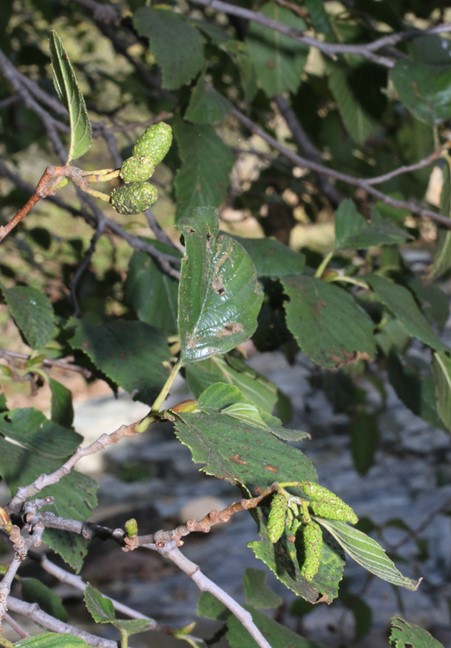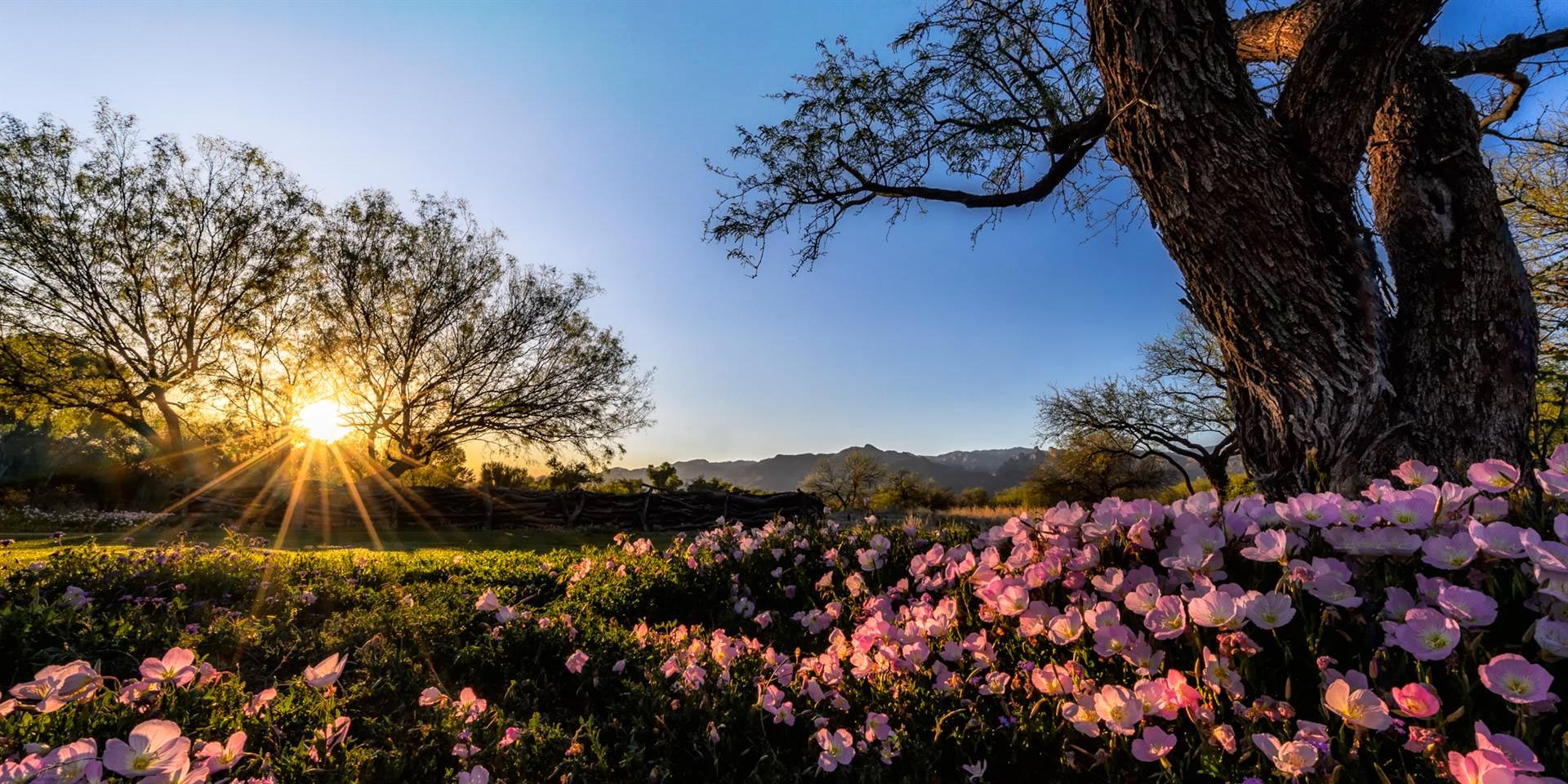Tracking Flower and Leaf Emergence in the Riparian Trees of Arizona
Frank Reichenbacher • frankr1@arizona.edu • 1 November 2022
As a University of Arizona graduate student working in the lab of ecologist, Charles H. Lowe Jr., in the late 1970s I had done a Master’s thesis on riparian plant communities.
One day at the lab I had a conversation with Lowe that I still think about. I was blathering on about something to do with riparian ecology when Lowe stopped me, all grizzled six foot four of him, leaned over a desk, puffed on his cigar and said, “So Frank, why is it that some trees (referring to broadleaf deciduous riparian trees) flower before they leaf, while other trees leaf before they flower.”
Clearly, I had been given a toy to play with so I would maybe keep quiet for a few minutes.
“Riparian” refers to the zone along the banks of a stream or river. In the arid and semiarid Southwest these zones take on heightened importance for humans and natural ecological systems to the extent they indicate, support, and nurture a key ecosystem. Wildlife, human and otherwise, actively seek out the cooling shaded environment created by deciduous trees, which are nothing like the dominant plants of surrounding non-riparian habitats, along precious flowing streams of water.
I’ve thought about Lowe’s question, of course, but beyond that I’ve thought a lot about the way it forces one to think about being a plant from the perspective of a plant, and then how the answer(s) might nudge one toward the realization that being a human being (at least, a pre-industrialized subsistence farmer or hunter-gatherer human being) is not that different.
I want to revisit this question – more than forty years after Lowe asked it – although, I now realize there are really two questions. First, there is one dangling detail that must be clarified before we should attempt to answer the original question, namely: is it true that some riparian trees leaf before they flower, while others flower before they leaf? I’ve wondered about that and I’m not sure it’s true, or at least, it may not be completely true. Maybe some individual trees in an area do one thing, while others of the same species do the opposite in another area? Maybe it changes from year to year? Or maybe nature is always more complex than we give it credit for and Lowe didn’t even ask the right question?
To support or refute the first question I’ll have to visit some trees in the spring hoping to get there at the moment leaves or flower begin to emerge from buds on the twig and record the date. While I’m at it, I’ll also want to document the whole phenological progression of flowering, leafing, and seed dispersal for the season because, quite frankly, we do not have enough on-the-ground observations of these key events in “phenology”; i.e., the study of cyclic and seasonal events in nature, and besides, I can’t get enough of our riparian forests, so I’m going to visit as often as I can from late January through April.
I think I just volunteered myself for a lot of work. I could probably use a little help, like maybe from the membership of the Arizona Native Plant Society?
All members in the several chapters are somewhere near at least some of our deciduous riparian plant communities. Even downtown Phoenix has the Tres Rios Wetlands. Gilbert has a dedicated riparian park.
But which trees, exactly, are we interested in? To be clear, I’m thinking about the broadleaf deciduous trees which drop leaves in the fall and spend the winter mostly naked. These are trees that dominate the wetter soils adjacent to streams and rivers, providing habitat for so many species of wildlife. Here they are, it’s not many; the broadleaf riparian deciduous trees of Arizona:
| Common Name | Scientific Name |
|---|---|
| Fremont Cottonwood | Populus fremontii |
| Narrowleaf Cottonwood | Populus angustifolia |
| Goodding Willow | Salix gooddingii |
| Bonpland Willow | Salix bonplandiana |
| Arizona Sycamore | Platanus wrightii |
| Velvet Ash | Fraxinus pennsylvanica var. velutina |
| Arizona Black Walnut | Juglans major |
| Arizona Alder | Alnus oblongifolia |
| Box Elder | Acer negundo |
If you want to participate, email me at frankr1@arizona.edu and I’ll send a list of procedures including what data to record and how to get it and suggestions about where to go for most members. There are numerous field guides that can help you identify trees of Arizona but send me your questions and pictures of trees if you need help identifying to species. I’ll collate the responses I receive and then perhaps we will talk the editors into publishing a report to the membership. While you are out there in your riparian forest keep in mind the question: Is it true some trees flower before they leaf while others leaf before they flower. When you have answered it to your satisfaction think about why. There is a reason, or, more likely, there are probably several reasons.
I should probably mention that all the trees listed above possess reproductive systems that are not typical of most flowering plants. They are either dioecious, male and female flowers on different plants, or monoecious, male and female flowers separate on the same plant. Most flowering plants are hermaphroditic, i.e., male and female parts are found in the same flower. (I wonder why all our riparian trees would have these atypical reproductive systems?)
See the attached photograph taken in early October 2022. Alders have an adaptation with which they metaphorically thumb their noses at other competing deciduous broadleaf trees. Their flower buds emerge in the fall, spend the winter fully exposed to the elements on the naked tree, and then flower in the spring. Why do you think this might be a good idea? Or is it a good idea? In this photo the plump female buds are at the top and the slender male buds are below.
Good luck! Stay safe, and maybe we’ll run into each other someplace leafy, green, and cool next spring.


